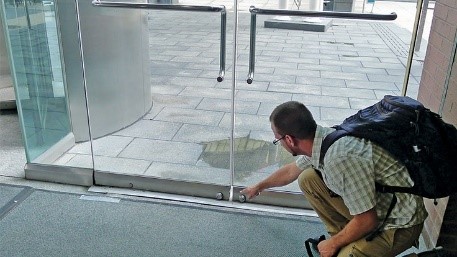Upgrade your method of inspection
You have worked hard to reduce the rodent population on the premises. You are proud and should be of your accomplishment. Unfortunately, there always seems to be a few mice left behind. Your client is getting agitated; you need to eliminate “The Elusive Rodent” now.
- Familiarize yourself with where all food products are stored. In a food storage warehouse, get to know the following; The flow of products: from where they enter, how the goods are processed, how damaged goods are handled, merchandising of the products, etc.
If it’s not a food warehouse or premises, please note that there still is food present on the premises. Eg. Employees eating areas, lockers where employees keep food brought from home. Coffee, sugar, and other office supplies are stored and how trash is handled.
- Do a walk about outside. The rodents are probably breeding inside but they could be from outside or visa versa. Check the building structure for openings around the pipes and utility line ducts, cracks in the walls, roof and wall vents, poorly sealed air conditioner ducts. Check and ask for storm water outflow drain pipes, floor drains. Check the spaces on the doors make sure that its sealed and make a note of the doors that are kept open. Check the voids in the partitioning walls if any.
Don’t limit your investigation to the ground only. Check the ceilings and attic, also rooftop vents and ventilation fans. Rodents with climb up conduits, building corners and gutters to get to the roofs.
- Rodent signs are there, find it. Look for ‘rub marks’ at entry points, these are dirty dark greasy stains. You will find this marks around pipes, along beams, along baseboards, wherever the rodent touched as they travel.
The most obvious sign and easiest to pick up is ‘Rodent droppings’ you will notice the droppings along runways, near harborage sites, and near food sources. Make a note of this than remove the droppings and nest material. This will tell you the level of infestation on the follow-up visit.
‘Rodent urine’ detect it with a UV light. Follow the trail to locate the movement in or out of the warehouse and to their harborage areas.
- Warehouse areas that are particularly susceptible to rodent infestation:
- Receiving dock– Food smells, spillage, and open doors attract rodents. Check the dock pit space below the floor.
- Damaged goods storage area– Products in this area are likely to be open or have damaged packaging making them easier for rodents to penetrate.
- Refrigeration areas– The enclosed dead space above, and the false floor below, coolers provide voids that can house rodents. Mice can live in the insulation in a walk-in cooler and in the warmth around compressor motors.
- Using a tracking patch or Detex blox. If you know that rodents are in the premises and cannot find evidence. Use a temporary nontoxic tracking patch, powder such as unscented baby powder, powder clay or Detex Blox that will leave footprints which can be seen with a UV light. Do a follow up in a day or two to see if there has been rodent activity.




1 Comment
Hi Leone, Thank you for the wonderful words, its a please having you on our blog.